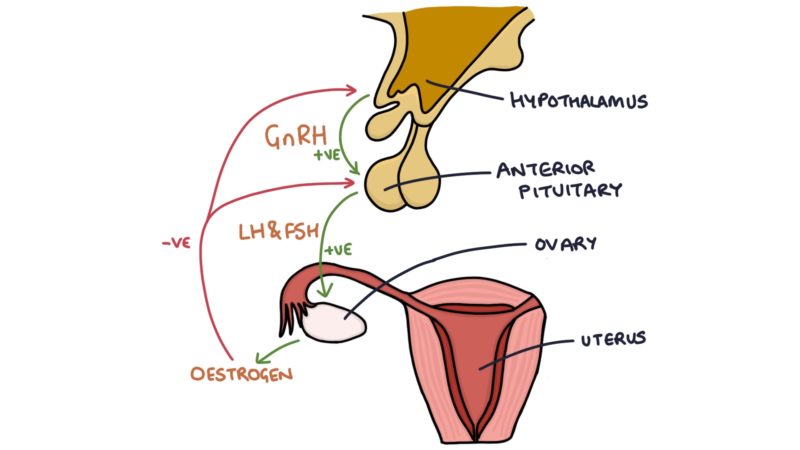The female sex hormones are the basis of the menstrual cycle, conception, pregnancy, contraception, menopause and hormone replacement therapy. It is worth spending time becoming familiar and comfortable with these hormones, as this will make learning everything else in obstetrics and gynaecology much more smooth.
Hypothalamic–Pituitary–Gonadal Axis
The hypothalamus releases gonadotrophin-releasing hormone (GnRH). GnRH stimulates the anterior pituitary to produce luteinising hormone (LH) and follicle-stimulating hormone (FSH).
LH and FSH stimulate the development of follicles in the ovaries. The theca granulosa cells around the follicles secrete oestrogen. Oestrogen has a negative feedback effect on the hypothalamus and anterior pituitary to suppress the release of GnRH, LH and FSH.

Oestrogen
Oestrogen is a steroid sex hormone produced by the ovaries in response to LH and FSH. The most prevalent and active version is 17-beta oestradiol. It acts on tissues with oestrogen receptors to promote female secondary sexual characteristics. It stimulates:
- Breast tissue development
- Growth and development of the female sex organs (vulva, vagina and uterus) at puberty
- Blood vessel development in the uterus
- Development of the endometrium
Progesterone
Progesterone is a steroid sex hormone produced by the corpus luteum after ovulation. When pregnancy occurs, progesterone is produced mainly by the placenta from 10 weeks gestation onwards. Progesterone acts on tissues that have previously been stimulated by oestrogen. Progesterone acts to:
- Thicken and maintain the endometrium
- Thicken the cervical mucus
- Increase the body temperature
Last updated April 2020
